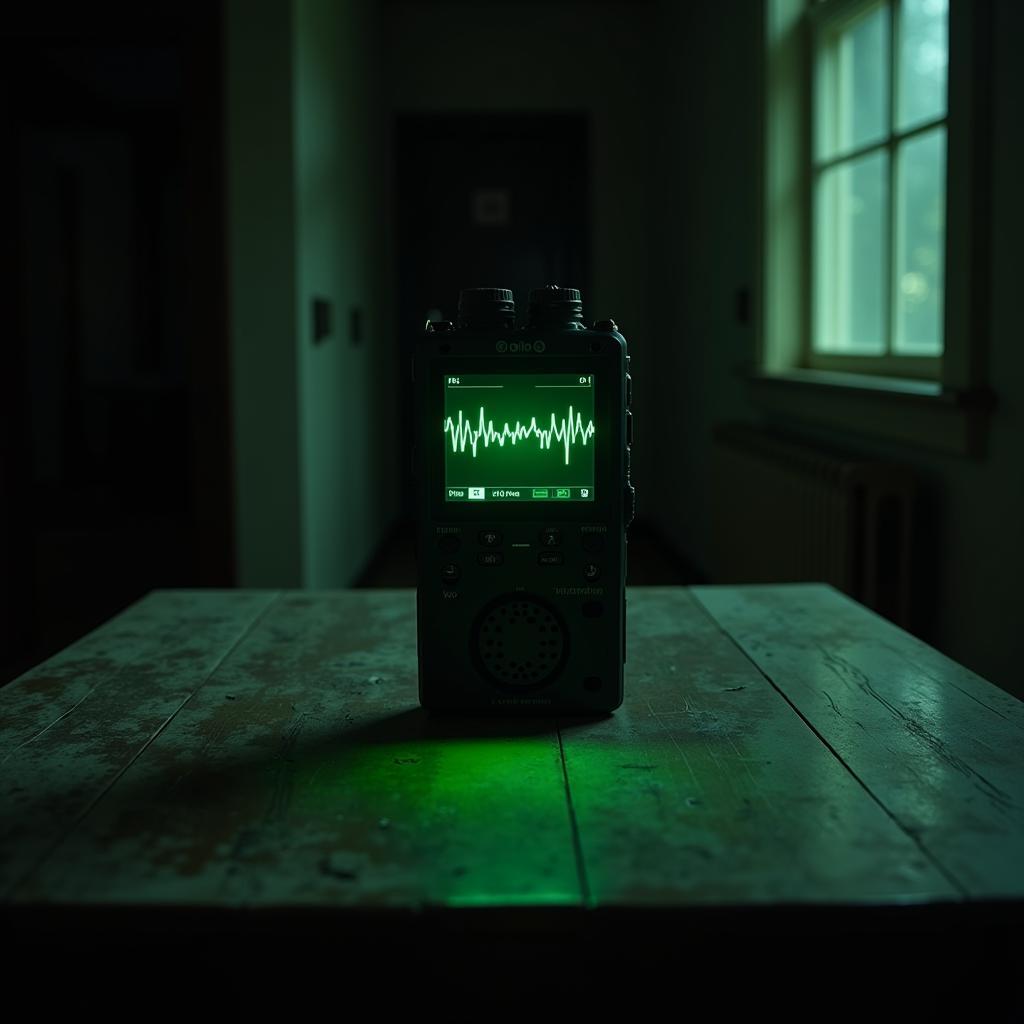The way we investigate the paranormal is changing. Enter “Research 2.0”, a new era leveraging technology and critical thinking to explore the unknown. No longer confined to dusty books and flickering candles, paranormal research is embracing cutting-edge tools and interdisciplinary approaches to shed light on unexplained phenomena.
Digitizing the Unknown: How Technology is Transforming Paranormal Research
Imagine replacing a clunky EMF meter with a smartphone app that maps electromagnetic fluctuations in real-time. This is just one example of how technology is revolutionizing the field. From digital audio recorders capturing EVPs (electronic voice phenomena) with crystal-clear clarity to thermal imaging cameras detecting subtle temperature shifts, researchers now have an arsenal of high-tech gadgets at their disposal.
But “research 2.0” goes beyond fancy equipment. It’s about harnessing the power of the internet to connect with fellow researchers, share data, and analyze evidence collaboratively. Online databases cataloging paranormal sightings, forums for discussing theories, and social media platforms dedicated to specific phenomena create a global community of investigators.
 Digital Audio Recorder for Paranormal Investigation
Digital Audio Recorder for Paranormal Investigation
From Ghost Hunting to Data Mining: The Rise of Scientific Rigor
Gone are the days of sensationalized ghost hunts fueled by fear and speculation. “Research 2.0” champions a more scientific approach, emphasizing data collection, analysis, and interpretation. Researchers are borrowing methodologies from various scientific disciplines, such as psychology, sociology, and physics, to study paranormal phenomena through a more objective lens.
This shift towards scientific rigor involves designing controlled experiments, implementing blind studies, and employing statistical analysis to identify patterns and draw meaningful conclusions. The goal is not just to document the unexplained but to understand it within a broader scientific context.
The Human Element: Balancing Skepticism and Open-Mindedness in Research 2.0
While technology and science play a crucial role in “research 2.0”, the human element remains paramount. The best paranormal investigators possess a unique blend of skepticism and open-mindedness. They critically evaluate evidence, consider alternative explanations, and remain open to the possibility of the unknown.
“[In this field, it’s crucial to approach every investigation with a healthy dose of skepticism without dismissing the experiences of witnesses. Sometimes, the most compelling evidence lies in the intersection of personal testimony and objective data.]” – Dr. Emily Carter, Paranormal Psychologist
The Future of Paranormal Research: Embracing Collaboration and Interdisciplinary Approaches
As we venture further into the era of “research 2.0”, collaboration and interdisciplinary approaches will be key to unlocking the mysteries of the paranormal. By fostering partnerships with scientists, academics, and researchers from other fields, we can gain new perspectives, leverage advanced technologies, and develop more sophisticated research methodologies.
“Research 2.0” is not just about finding answers; it’s about asking the right questions. By embracing a spirit of curiosity, collaboration, and critical inquiry, we can continue to push the boundaries of our understanding and shed light on the hidden corners of our world.
Research 2.0: Frequently Asked Questions
1. What is the biggest difference between traditional paranormal research and “research 2.0”?
While traditional research often relied on anecdotal evidence and subjective experiences, “research 2.0” prioritizes a more scientific approach, emphasizing data collection, analysis, and interpretation.
2. What role does technology play in “research 2.0”?
Technology plays a vital role in modern paranormal research, providing tools like EMF meters, digital audio recorders, and thermal imaging cameras to detect and document potential paranormal activity. Online platforms also facilitate data sharing, collaboration, and communication among researchers.
3. How can I get involved in “research 2.0”?
Numerous online resources, forums, and organizations dedicated to paranormal research welcome individuals with a genuine interest. Start by educating yourself on research methodologies, connecting with local groups, and participating in online discussions.
4. Is “research 2.0” only focused on ghosts?
No, “research 2.0” encompasses a wide range of paranormal phenomena, including but not limited to ghosts, UFOs, ESP, and cryptozoology. The principles of scientific inquiry and critical thinking apply across the board.
5. What are some of the challenges facing “research 2.0”?
Despite its advancements, “research 2.0” still faces challenges such as funding limitations, ethical considerations, and the subjective nature of many paranormal experiences.
Explore Further
To delve deeper into specific areas of Paranormal Research, check out these resources:
- english topics for research paper
- audiology research
- arthur m. blank center for stuttering education and research
For those seeking support or guidance in their own paranormal experiences:
Contact us:
Phone Number: 0904826292
Email: research@gmail.com
Address: No. 31, Alley 142/7, P. Phú Viên, Bồ Đề, Long Biên, Hà Nội, Việt Nam.
Our dedicated team is available 24/7 to provide assistance and address your inquiries.